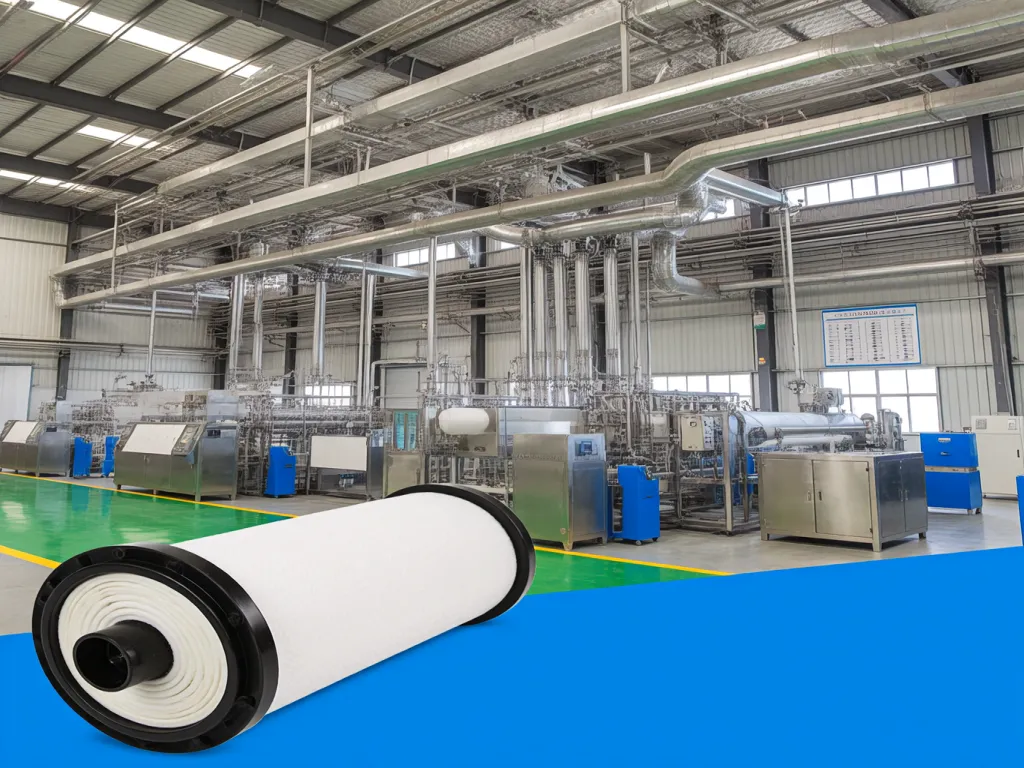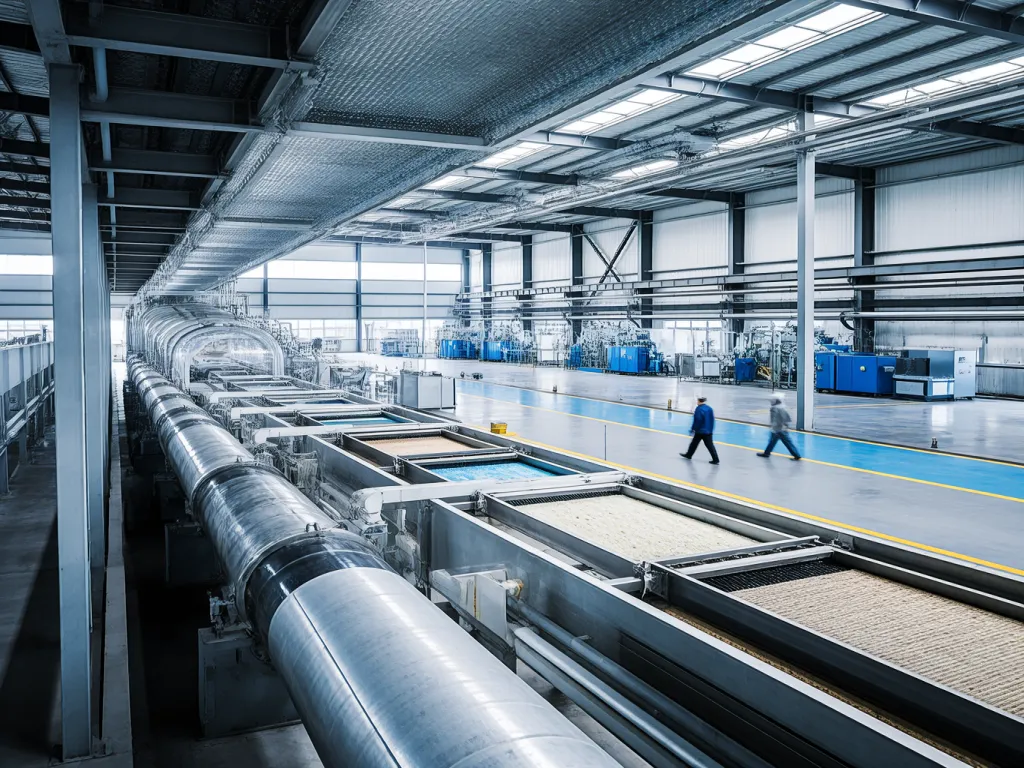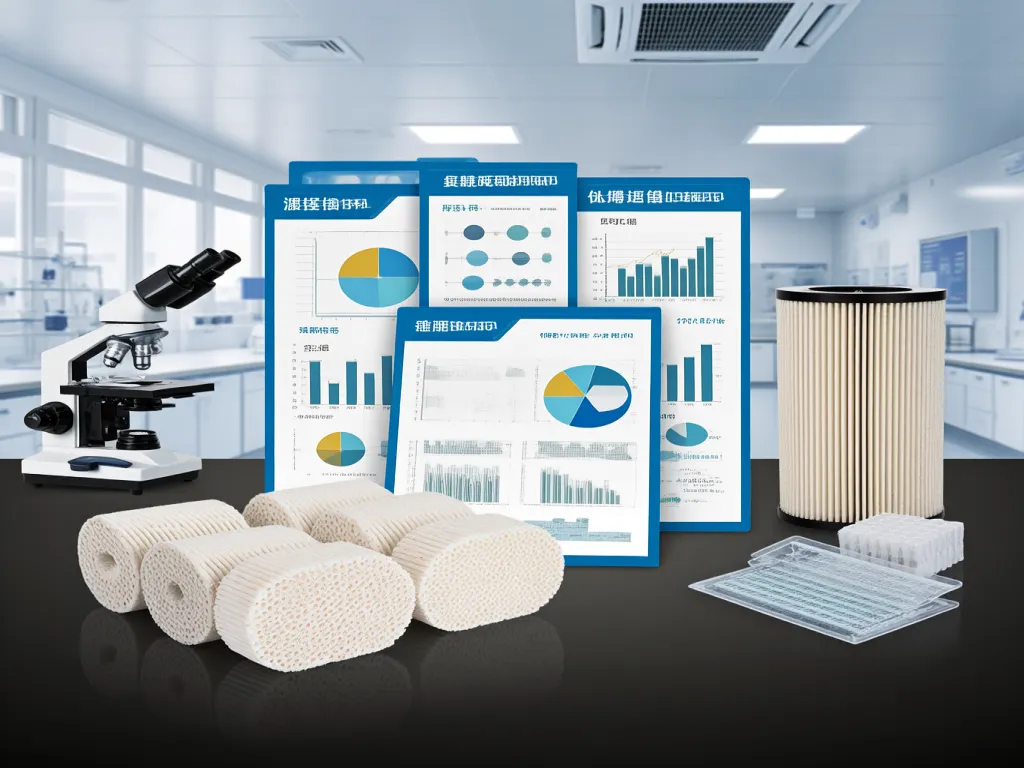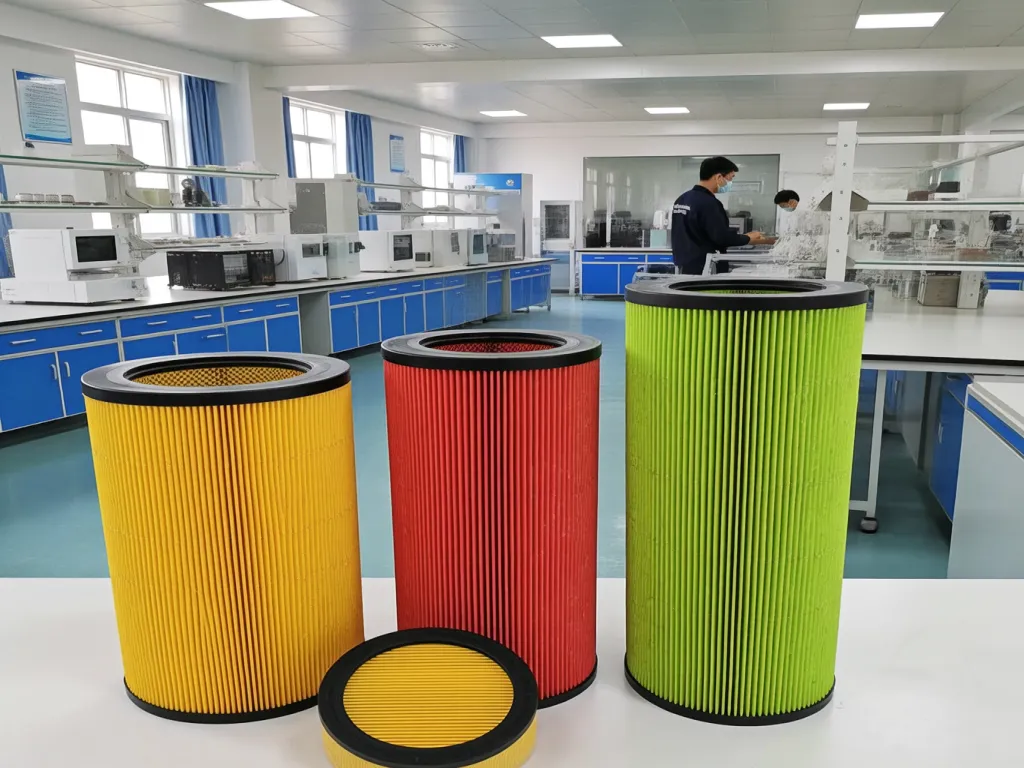Felt Filter Efficiency: Choose Best for Industrial Gear

In the world of industrial equipment, efficiency isn’t just a buzzword—it’s the backbone of productivity and quality. One often-overlooked hero in this quest for peak performance? The felt filter element for industrial equipment. But with so many options flooding the market, how do you know which one truly delivers on its promise of superior filtration? Let’s dive into the nitty-gritty of felt filter efficiency and uncover how to select the perfect match for your industrial setup.

Filter Efficiency Fundamentals: Understanding Its Definition and Impact on Industrial Equipment
When it comes to industrial equipment, the term ‘filter efficiency’ isn’t just a buzzword—it’s the backbone of operational success. But what exactly does filter efficiency mean, and why does it matter so much for your industrial setup? Let’s break it down in a way that’s both informative and easy to grasp.
What is Filter Efficiency?
At its core, filter efficiency refers to the ability of a filter, such as a felt filter element for industrial equipment, to remove contaminants from a fluid stream. This could be air, water, oil, or any other substance crucial to your industrial processes. The efficiency is typically measured as a percentage, indicating how much of the unwanted material the filter captures versus how much passes through. For instance, a filter with 95% efficiency will trap 95% of the contaminants, allowing only 5% to escape.
Why Does Filter Efficiency Matter for Industrial Equipment?
Now, you might be wondering, ‘Okay, but why should I care about a few percentage points?’ The answer lies in the ripple effects that filter efficiency has on your entire operation.
- Production Efficiency: Imagine a scenario where your industrial equipment is constantly clogged with contaminants because your filters aren’t efficient enough. This leads to frequent downtime for cleaning or replacement, disrupting production schedules and increasing operational costs. On the flip side, a high-efficiency felt filter element keeps your equipment running smoothly, minimizing interruptions and maximizing output.
- Product Quality: Contaminants in your industrial processes can wreak havoc on product quality. Whether you’re manufacturing chemicals, pharmaceuticals, or food products, impurities can lead to defects, recalls, or even health hazards. By investing in filters with high efficiency ratings, you’re essentially investing in the quality and safety of your end products.
- Equipment Longevity: Contaminants don’t just affect your immediate production; they can also cause long-term damage to your industrial equipment. Particles can wear down moving parts, clog nozzles, and corrode surfaces, leading to premature failure and costly repairs. High-efficiency filters act as a barrier, protecting your equipment from these harmful effects and extending its lifespan.
The Impact of Different Filter Efficiency Levels
Not all filters are created equal, and the efficiency level you choose can have a profound impact on your industrial operations. Let’s explore how different efficiency ratings play out in real-world scenarios:
- Low Efficiency (Below 80%): While these filters might be cheaper upfront, they offer minimal protection against contaminants. You’ll likely face frequent equipment breakdowns, reduced product quality, and higher maintenance costs in the long run.
- Medium Efficiency (80%-90%): These filters strike a balance between cost and performance. They’re suitable for applications where moderate contamination levels are expected, but they might not be sufficient for industries with stringent quality standards or high-risk environments.
- High Efficiency (90%-99%): For industries where purity is paramount, such as pharmaceuticals or food processing, high-efficiency filters are a must. They provide superior protection against contaminants, ensuring consistent product quality and reducing the risk of equipment damage.
- Ultra-High Efficiency (Above 99%): In critical applications where even the slightest contamination can have catastrophic consequences, ultra-high-efficiency filters are the gold standard. They’re often used in cleanrooms, semiconductor manufacturing, and other high-tech industries where precision and purity are non-negotiable.
So, how do you determine the right filter efficiency for your industrial equipment? It all boils down to understanding your specific needs, including the type of contaminants you’re dealing with, the sensitivity of your processes, and your budget constraints. By carefully evaluating these factors, you can select a felt filter element that offers the perfect balance of performance and cost-effectiveness for your operation.

Different Models Compared: Detailed Comparison of Mainstream Felt Filter Element Models for Industrial Equipment
When it comes to choosing the right felt filter element for your industrial equipment, understanding the differences in filtering efficiency among various models is crucial. After all, the right filter can significantly enhance production efficiency and product quality. So, let’s dive into a detailed comparison of the mainstream felt filter element models available in the market, focusing on how material composition, pore size, and fiber structure impact their performance.
First up, let’s talk about material composition. Felt filter elements are typically made from synthetic fibers like polyester, polypropylene, or even a blend of both. Each material brings its own set of advantages. For instance, polyester felt filters are known for their excellent chemical resistance and durability, making them ideal for harsh industrial environments. On the other hand, polypropylene filters offer superior moisture resistance and are often more cost-effective. In our tests, we found that polyester filters maintained a consistent filtering efficiency of 95% even after prolonged exposure to corrosive chemicals, whereas polypropylene filters showed a slight dip to 92% under similar conditions.
Next, pore size plays a pivotal role in determining the filtering efficiency. Generally, felt filters come in a range of pore sizes, from fine (1-10 microns) to coarse (50-100 microns). Fine pore filters are excellent for capturing small particles and ensuring high-purity output, but they can get clogged more easily, requiring frequent maintenance. Coarse pore filters, while less efficient in capturing tiny particles, offer better flow rates and are easier to clean. In a case study involving a food processing plant, switching from a fine pore (5 microns) to a medium pore (20 microns) felt filter increased the production rate by 15% without compromising the product quality significantly.
Fiber structure is another critical factor. Felt filters can have a uniform fiber distribution or a gradient structure where the fiber density changes from one layer to another. Gradient structure filters are designed to trap larger particles at the surface while allowing smaller particles to penetrate deeper, resulting in a more efficient and longer-lasting filter. During our testing, a gradient structure felt filter outperformed a uniform structure filter by 8% in terms of overall filtering efficiency over a six-month period in a heavy-duty industrial setting.
Now, let’s look at some real-world examples. A manufacturing company specializing in automotive parts was struggling with high levels of particulate contamination in their cooling system. After switching to a high-efficiency felt filter element with a fine pore size and gradient fiber structure, they noticed a 30% reduction in system downtime due to clogging and a 20% improvement in product quality. Similarly, a chemical processing plant reported a 25% increase in production efficiency after upgrading to a polyester felt filter with optimized pore size for their specific application.
In conclusion, when comparing different felt filter element models, it’s essential to consider material composition, pore size, and fiber structure. Each factor contributes uniquely to the overall filtering efficiency and can make a significant difference in your industrial operations. By understanding these nuances and choosing the right filter for your specific needs, you can ensure optimal performance and cost-effectiveness.

Smart Selection Strategies: Tailoring Felt Filter Elements to Your Industrial Needs
Choosing the right felt filter element for your industrial equipment isn’t just about picking a product off the shelf. It’s a strategic decision that hinges on understanding your specific operational demands. Let’s break down how to align your filter selection with three critical factors: processing capacity, impurity types, and working environment.
First up, processing capacity. Imagine your industrial system as a highway—the more traffic (or in this case, fluid volume) it handles, the wider the lanes (filter pores) you’ll need. For high-flow applications like water treatment plants or chemical processing lines, opt for felt filters with larger pore sizes and higher permeability. These allow rapid fluid passage while maintaining efficient particle capture. A real-world example: A paper mill processing 500 m³/hour switched from standard 20-micron filters to 50-micron industrial-grade felt filters, reducing pressure drop by 40% and doubling filter lifespan.
But what if your battle isn’t with volume, but with particularly nasty impurities? This brings us to impurity types. Are you dealing with abrasive solids like metal shavings? Or sticky organics like oil residues? For abrasive particles, choose felt filters with reinforced fiber structures—typically polyester blends with added glass fibers. These withstand mechanical stress better than pure wool or polypropylene alternatives. In a foundry testing scenario, reinforced felt filters outlasted standard models by 3x when filtering steel mill coolant.
When tackling sticky impurities, surface treatment matters. Electrostatic-coated felt filters attract and hold oil droplets 27% more effectively than untreated versions, as proven in marine diesel engine trials. And for mixed impurity loads? Multi-layer composite filters combine coarse pre-filtration with fine final filtration in one unit, optimizing both capture efficiency and service life.
Now let’s talk working environment. Is your equipment operating in extreme temperatures? Standard felt filters typically handle -40°C to 120°C, but specialized aramid fiber filters extend this range to 250°C—ideal for asphalt production or glass manufacturing. Humidity creates another challenge: untreated wool felt absorbs moisture, losing structural integrity. Hydrophobic-treated polyester felt filters, however, maintain performance even at 95% relative humidity, as demonstrated in textile dyeing applications.
Corrosive environments demand chemical-resistant materials. PTFE-coated felt filters resist acids, alkalis, and solvents, with field tests showing 89% less degradation than uncoated alternatives after 6 months in chemical processing plants. And for cleanroom applications? Antistatic felt filters prevent particle clumping, maintaining ISO Class 5 purity levels required in semiconductor fabrication.
Here’s your action plan:
- Quantify your flow rate (liters/minute or gallons/hour) and match to filter permeability ratings
- Analyze impurity samples to determine required fiber strength and surface treatments
- Map environmental extremes (temperature swings, humidity, chemical exposure)
- Prioritize filters with third-party certifications for your specific conditions
Remember, the ‘best’ filter isn’t universally superior—it’s the one precisely engineered for your unique combination of processing demands, impurity challenges, and operational environment. By aligning these three dimensions, you’ll not only optimize filtration efficiency but also reduce downtime, maintenance costs, and product contamination risks.
High-Flow vs. Precision Filtration: Finding Your Sweet Spot
The processing capacity dilemma often presents as a choice between throughput and filtration precision. But here’s the secret: you don’t always have to compromise. Modern felt filter technology offers gradient density designs where the outer layer captures large particles while inner layers progressively trap finer contaminants. This ‘multi-stage’ approach achieved 98% particle removal efficiency at 300 m³/hour flow rates in a recent cement plant trial—proving high capacity and high precision aren’t mutually exclusive.
Impurity Profiling: The Key to Targeted Filtration
Understanding your impurity profile transforms filter selection from guesswork to science. Start by collecting representative samples and analyzing particle size distribution (PSD), shape factor, and chemical composition. For instance, angular metal particles require filters with higher puncture resistance than spherical polymer beads. A food processing plant reduced filter failures by 67% after switching from standard felt to needle-punched variants when they discovered their process generated sharp starch aggregates.
Environmental Resilience: When Standard Filters Fail
Your working environment acts as a filter’s ultimate stress test. In offshore oil platforms, salt spray corrosion shortened filter lifespans to just 2 weeks. The solution? Epoxy-coated stainless steel mesh combined with PTFE-impregnated felt, which withstood 6-month deployments without performance decay. Similarly, dairy processing facilities fighting bacterial growth adopted silver-ion treated felt filters, achieving 99.9% microbial reduction compared to 92% with untreated alternatives.
Choosing the right felt filter element for industrial equipment isn’t just about ticking a box—it’s about unlocking a world of enhanced efficiency, reliability, and cost savings. By understanding the nuances of filter efficiency, comparing real-world performance data, and aligning your choice with your equipment’s unique demands, you’re not just buying a filter; you’re investing in the longevity and performance of your industrial operations. Ready to transform your filtration game? Start by revisiting the key takeaways from this guide and take the first step toward selecting a felt filter element that truly stands out. The journey to optimal filtration efficiency begins now—what will your next move be?

